Artichokes are a popular food that is native to the Mediterranean region.
It has been cultivated for many years and eaten by people all over the world.
They can be eaten raw as long as you remove the thorny leaves from the outside.
If they’re cooked, they have a softer texture and more flavor.
You can also add them into recipes such as stuffing for meat dishes or pasta bake dishes.
This article will look at what artichoke tastes like, how to cook an artichoke, and more.
What is Artichoke?
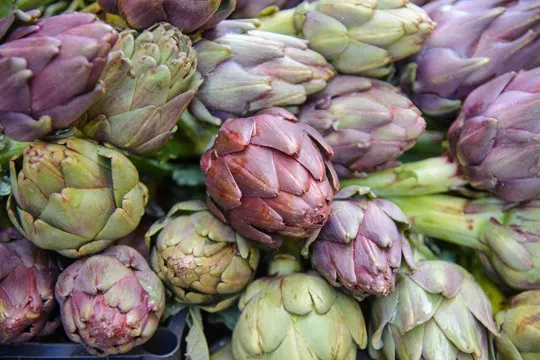
Artichoke is a perennial flowering plant of the globe artichoke family, cultivated as a food – eaten whole or used in cooking.
The edible portion (the flower) may be boiled, baked, or fried and served hot with butter and salt.
The outer leaves are often trimmed, and the remaining prickly points are cut off to make them more palatable.
Artichokes were brought into cultivation in northern Italy during the 15th century; before then, wild artichokes occurred only south of Rome, where they still grow wild.
This perennial plant grows best in full sun exposure with moderately fertile, well-drained soils.
It requires consistently moist soils throughout its seasonal growth cycle, including during winter dormancy when no new vegetative growth occurs; tolerance to drought is low (once established).
It can also be made into dips such as “artichoke dip”.
Artichokes are high in folate and other nutrients that have anti-cancer properties like lutein.
They also contain fiber for digestion regulation purposes.
What Does Artichoke Look Like?

Artichokes are a type of thistle, a spiky plant that grows up to two meters tall.
The artichoke looks like an inverted flower with green leaves on the outside and yellowish-green fleshy bracts in the center.
So once you’ve peeled off the tough outer skin, the artichoke is pretty edible.
Nutritional Benefits of Artichokes
They are a good source of dietary fiber.
Dietary fiber has been shown to help lower blood cholesterol levels and improve digestive health by removing toxic waste from the colon more quickly than other foods that contain no or less dietary fiber.
Artichoke is also high in antioxidants which have been linked to cancer prevention and healthy aging.
They are packed with potassium, which has been shown to help regulate blood pressure and heart rate.
Potassium is also essential for muscle growth in the body as well as nerve function/relaxation.
They are a good source of folate; this beneficial nutrient helps with cell production, DNA synthesis, and protein metabolism while strengthening your immune system.
Folate is important during pregnancy because it protects against congenital disabilities such as spina bifida or cleft palate caused by certain kinds of deficiencies early on in development.
It’s also vital for brain health – an adequate intake ensures healthy cognitive functioning (as evidenced by increased verbal fluency) when aging occurs.
Artichoke juice is great for detoxing the liver because it contains compounds called silymarin and sesquiterpenoids, which help protect the liver from toxins.
They are also rich in Vitamin C, attributed to a stronger immune system and healthy skin.
Artichokes also contain luteolin, an antioxidant that is a potential chemoprotective agent for breast cancer cells in vitro (meaning it helps protect healthy cells from free radicals).
Finally, artichoke extract is also thought to reduce the risk of developing Alzheimer’s disease and other forms of dementia by protecting against oxidative stress.
What Does Artichoke Taste Like? Does Artichoke Taste Good?
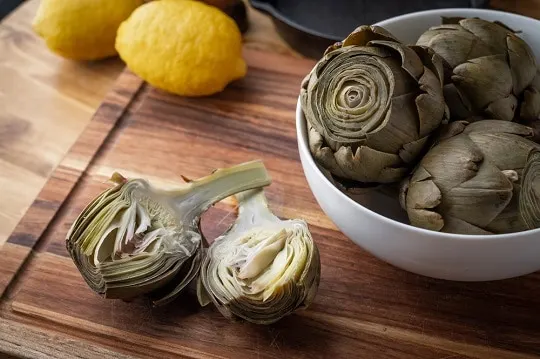
Artichokes are a member of the thistle family, and their heart can be eaten.
Uncooked, artichokes are bitter, and as they cook, their flavor becomes sweeter.
Artichoke leaves can be eaten along with the heart or prepared separately, typically boiled in a saucepan of water for about fifteen minutes until tender but still crisp.
The top third to one-half inch of the stem is peeled off before cooking to not become too tough during boiling.
Artichokes also make a great addition to soups and salads.
The typical way people eat an artichoke today is by breaking off one leaf at a time from the middle point towards the bottom, dipping it into melted butter (or mayonnaise), and eating it.
The leaves are then pulled off one at a time while scraping the tender flesh from the bottom of each leaf with their teeth to extract as much flavor as possible.
The heart is usually eaten last and removed by twisting or pulling it out of its furry choke (the “beard”).
After that, all that’s left is to eat the fluffy inner part known as the thistle itself.
The texture of the artichoke is crisp and crunchy on the outside, but its heart is soft and tender.
How to Cook Artichoke?
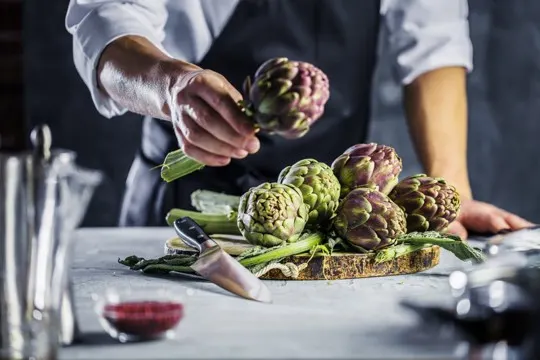
Artichokes are one of the most loved vegetables for many people.
They have a very distinct taste that will either be considered too strong or just right, depending on who you talk to about them.
One thing is certain: artichoke recipes abound.
- First off, trim any tough leaves from the outside and remove any small stems to reveal the heart.
- Next, place in water with salt in a pot until the water starts boiling.
- Then reduce heat, so it remains at a simmering boil and cooks for 25 minutes (or 20 if using smaller artichokes).
- After the cooking time has elapsed, let sit for 15 minutes before eating.
- Cook whole artichoke hearts by placing stem side down into an inch of water while the pot is on a high simmer for 45 minutes.
- Finally, remove and place in ice water to cool off before eating.
Another way to cook artichokes is by baking them.
Place whole hearts on top of a butter-lined dish with salt and pepper for flavor.
Bake at 350 degrees Fahrenheit for 45 minutes, flipping halfway through.
Artichoke can also be eaten raw in dips or salads if the thorny leaves are removed first.
These can either be chopped up into small pieces or left as slices to add texture.
For some people, this vegetable is one they think tastes so good that it doesn’t need any work done before eating – enjoy.
How to Store Artichoke?
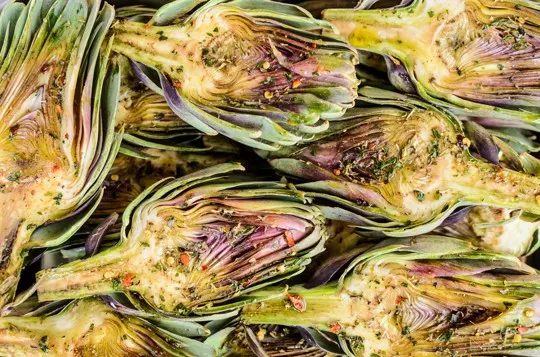
Artichoke is a good reminder that winter isn’t all bad.
Artichokes are a few vegetables that can be stored for long periods without doing anything special.
This means you can buy them in bulk and enjoy their delicious taste throughout the entire season, even if it lasts well into March or April.
To store artichokes in your refrigerator: After washing an individual artichoke thoroughly under cold water, place each leaf on top of another until they form a cone shape with small leaves at the bottom.
Cover loosely with plastic wrap and refrigerate overnight as needed.
You may also want to add some lemon or lime juice to help keep them fresh longer.
Conclusion
Artichoke is traditionally eaten in the Mediterranean area, especially in Italy, and is used for sauces.
In some countries, like the UK or Ireland, it is also a popular dish.
It is usually served as a side dish with pasta or omelets but can also be used as an ingredient in soups.
Artichokes have a good nutritional profile and provide vitamin C, minerals, and fiber.
They are also low in calories and fats, which makes them ideal for dieters.
Frequently Asked Questions (FAQs)
What kind of flavor can I expect from artichoke?
Artichokes have a slightly nutty and earthy taste that is also delicately sweet. They are also known for their tender, meaty texture.
How do you prepare artichoke for eating?
To prepare an artichoke for eating, you can steam, boil, or roast the vegetable. You can also add them to salads or use them in a variety of recipes.u003cbru003e
Is artichoke a healthy food?
Yes! Artichokes are full of fiber and antioxidants which make them a very healthy addition to your diet. They are also low in calories and contain vitamins A, C, and K, as well as minerals like magnesium and potassium.
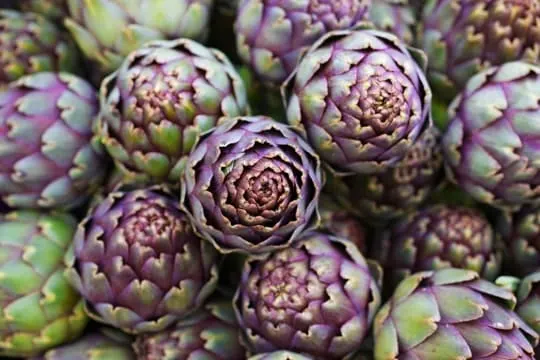
What Does Artichoke Taste Like? Does Artichoke Taste Good?
Ingredients
- Artichoke
- Ingredients from your favorite recipes
Instructions
- Depending on the recipes you choose, the taste can vastly differ.
- For authentic results, it is important to choose a recipe that will highlight the original flavor.
- Have fun experimenting with different recipes and taste tests!
